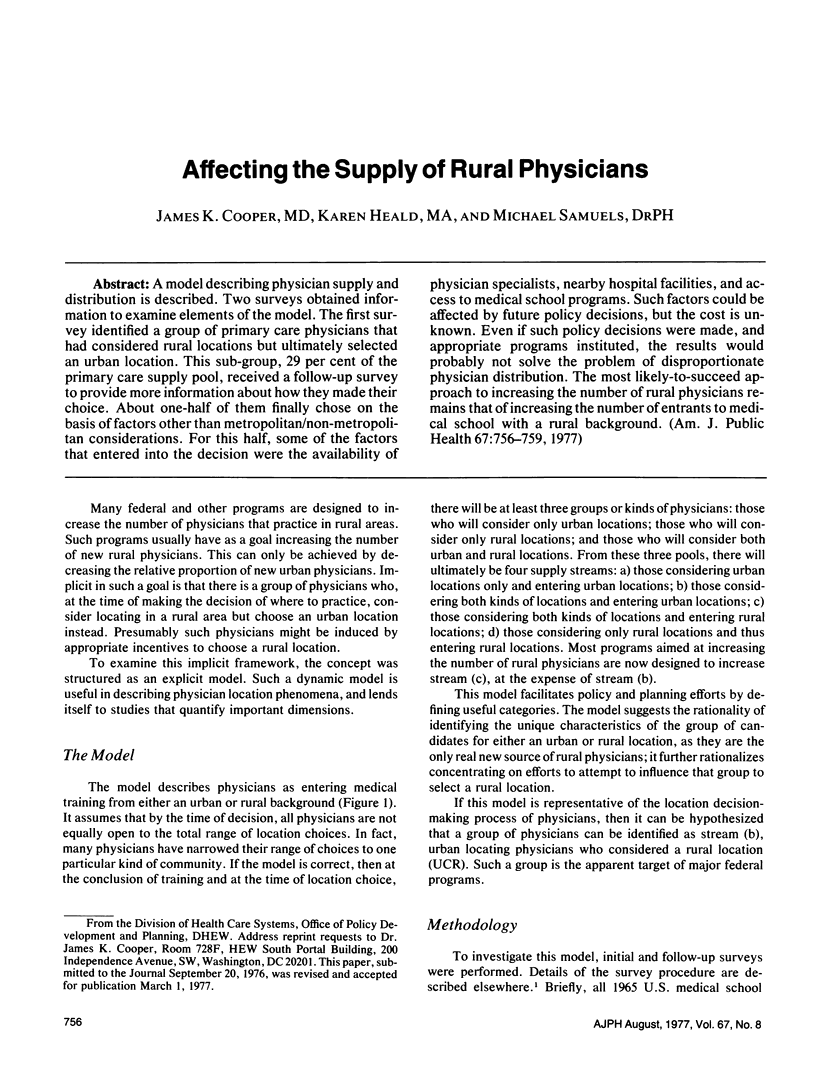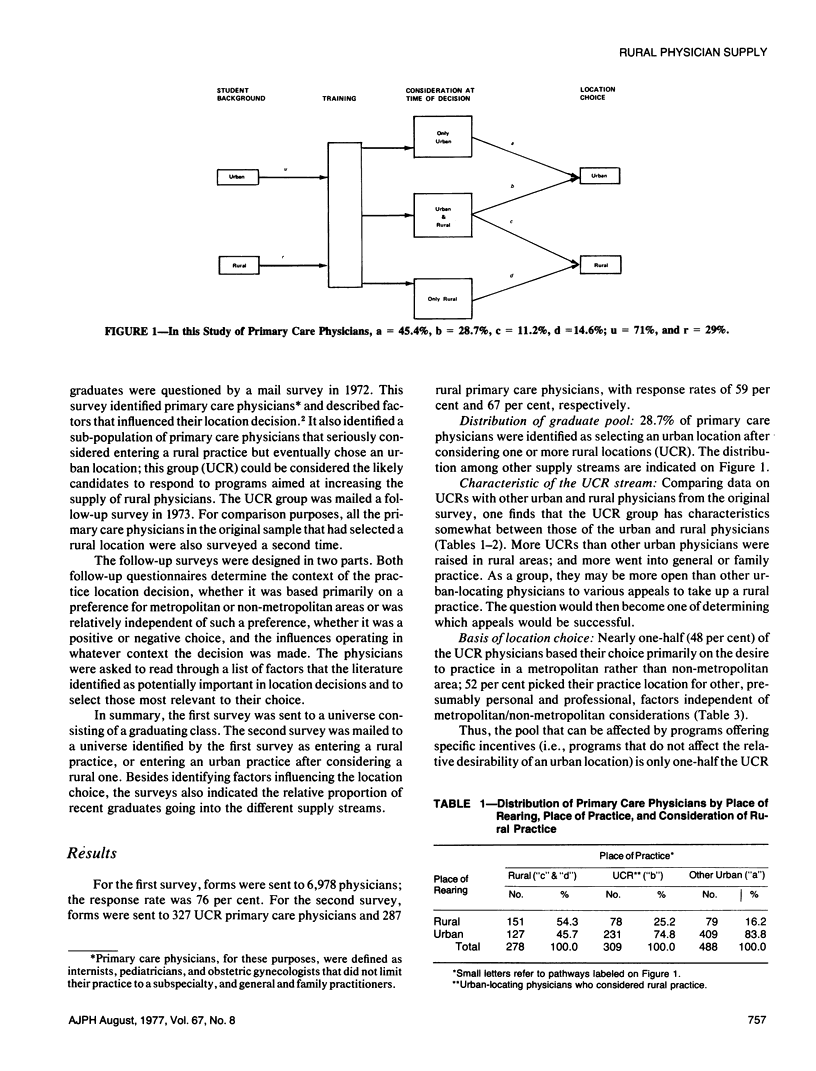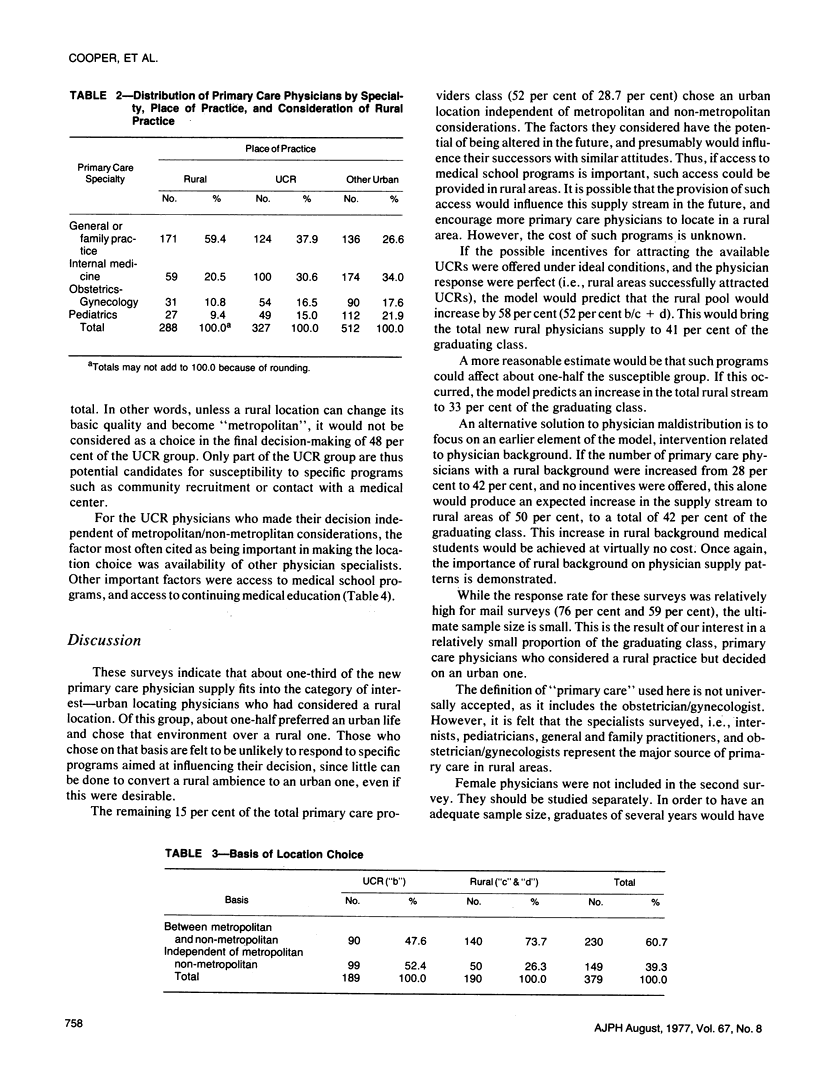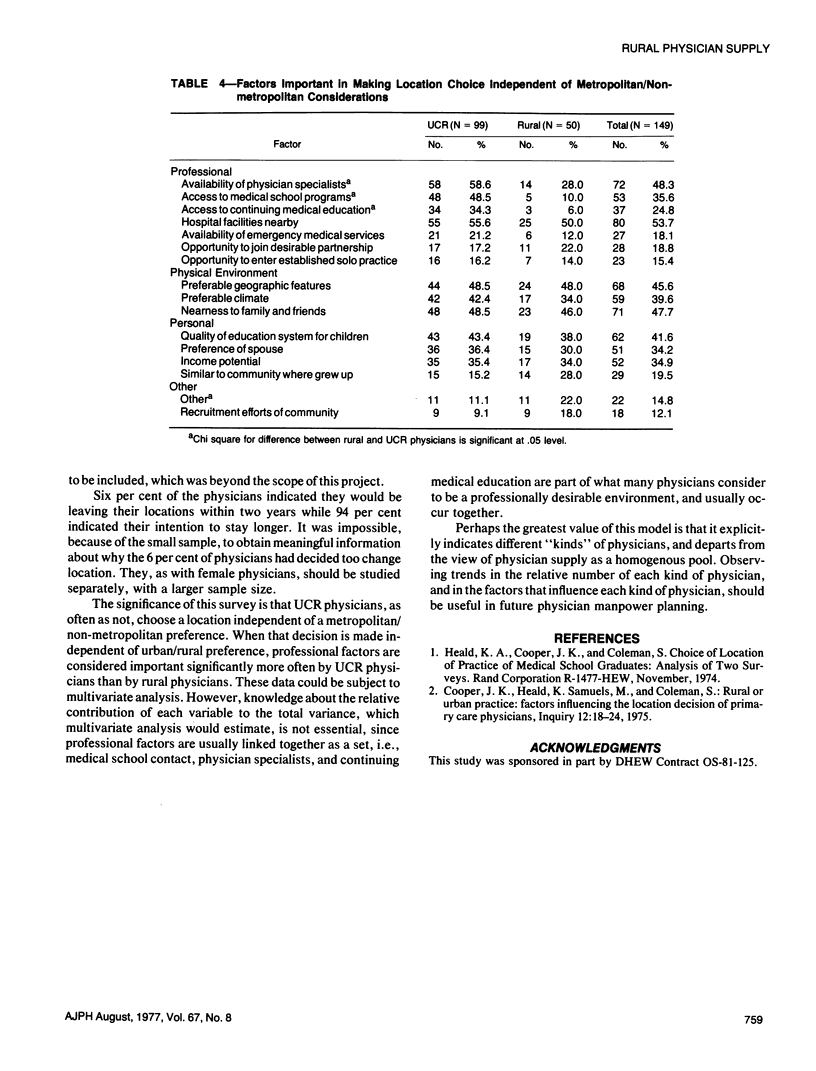Abstract
A model describing physician supply and distribution is described. Two surveys obtained information to examine elements of the model. The first survey identified a group of primary care physicians that had considered rural locations but ultimately selected an urban location. This sub-group, 29 per cent of the primary care supply pool, received a follow-up survey to provide more information about how they made their choice. About one-half of them finally chose on the basis of factors other than metropolitan/non-metropolitan considerations. For this half, some of the factors that entered into the decision were the availability of physician specialists, nearby hospital facilities, and access to medical school programs. Such factors could be affected by future policy decisions, but the cost is unknown. Even if such policy decisions were made, and appropriate programs instituted, the results would probably not solve the problem of disproportionate physician distribution. The most likely-to-succeed approach to increasing the number of rural physicians remains that of increasing the number of entrants to medical school with a rural background.
Full text
PDF





